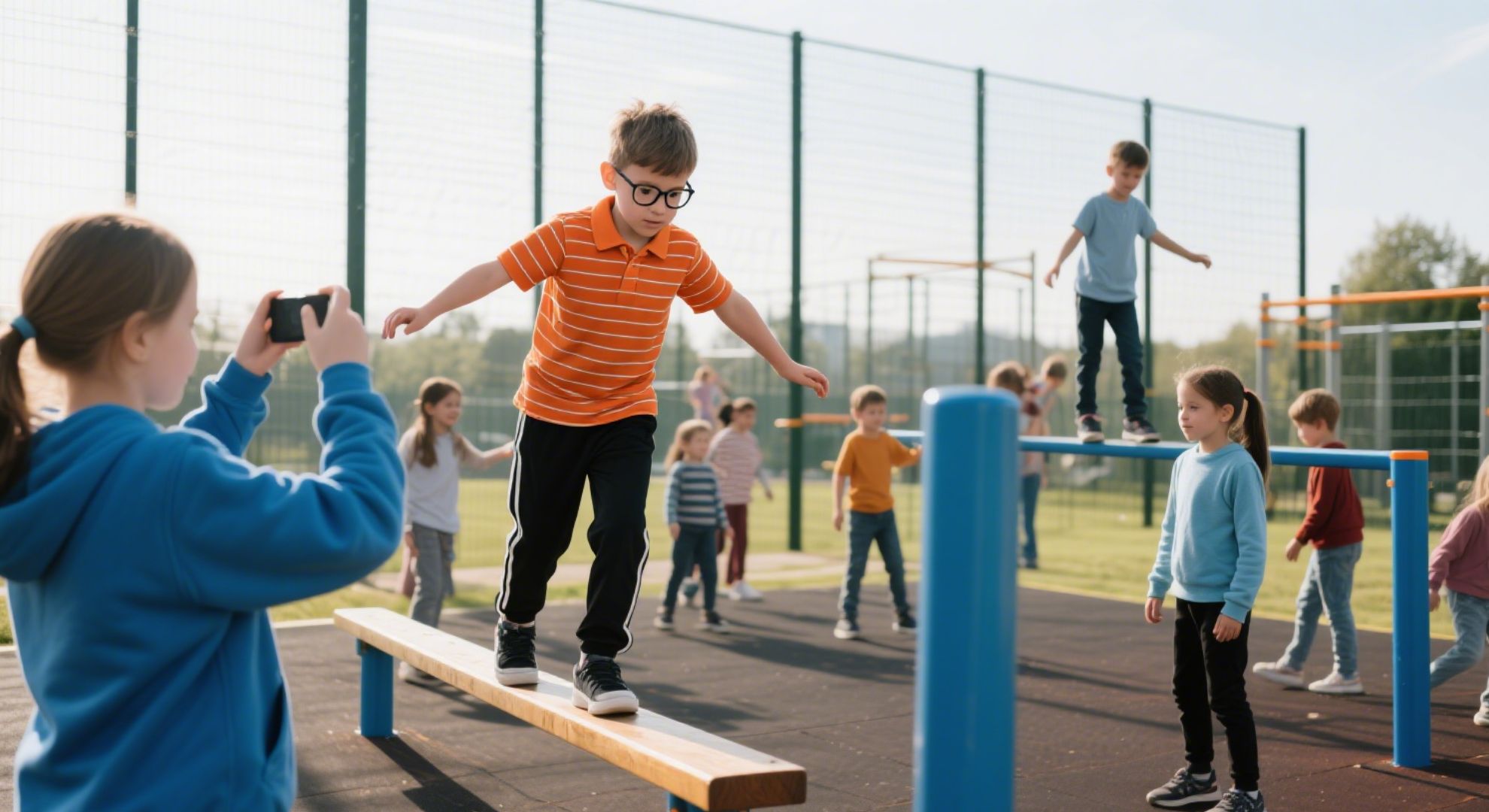The Ultimate Guide to Playground Equipment Names
2025年6月26日 / By SafeKidsPlay
Designing a perfect playground requires more than just picking colorful equipment. To create an environment that inspires creativity, promotes physical development, and guarantees safety, you must understand the different types of playground equipment and their specific benefits.
Below is a detailed guide to the most common playground equipment names, helping you make informed decisions for your playground project.
1. Slides
Slides are one of the most loved and versatile playground features. They come in a variety of shapes and sizes, such as straight slides, spiral slides, wave slides, and enclosed tunnel slides. Slides not only provide excitement but also help children develop balance, coordination, and spatial awareness as they climb up and descend. Additionally, slides promote confidence and risk assessment skills in a safe environment. High-quality slides are made from durable materials like high-density polyethylene (HDPE) or stainless steel to withstand heavy use and weather conditions.
2. Swings
Swings are essential for any playground, offering both fun and developmental benefits. There are several types: belt swings for older kids, bucket swings designed for toddlers to provide extra support, and tire swings that allow multiple children to swing together. Swinging improves motor skills, particularly coordination and balance, while stimulating the vestibular system, which is critical for sensory development. Swings also encourage social interaction, patience, and turn-taking among children.
3. Climbing Structures
Climbing structures include rock walls, climbing nets, cargo nets, ladders, and climbing domes. These are fantastic for physical fitness as they build upper body strength, endurance, and flexibility. Climbing challenges children to problem-solve, strategize, and build confidence. For example, rock climbing walls simulate real-world challenges in a controlled setting. Materials for these structures range from reinforced steel to weather-resistant ropes and textured panels, ensuring safety and durability.
4. See-Saws / Teeter-Totters
See-saws are classic playground equipment that focus on balance and teamwork. By working together to move up and down, children learn about weight distribution, timing, and cooperation. This simple piece encourages social skills and coordination while also providing gentle physical exercise. Modern see-saws often include springs or shock absorbers for safer, smoother motion.
5. Monkey Bars / Horizontal Ladders
Monkey bars are horizontal ladders that help children develop upper body strength, hand grip, and endurance. Navigating monkey bars also improves hand-eye coordination and confidence. This equipment encourages risk-taking within a safe boundary and is often used in obstacle courses. The bars are typically made of powder-coated steel to resist rust and provide a firm grip.
6. Merry-Go-Rounds / Spinners
Merry-go-rounds or spinners bring dynamic rotational movement to playgrounds. This equipment promotes vestibular balance and spatial awareness, helping children understand motion and develop coordination. Additionally, merry-go-rounds foster social interaction as multiple children can play together, learning cooperation and group play. Modern designs incorporate safety features like smooth edges and controlled rotation speed.
7. Playhouses and Tunnels
Playhouses and tunnels spark imagination and role-playing, essential components of social and cognitive development. Playhouses mimic real-life environments and encourage creative storytelling, while tunnels provide exciting crawl-through spaces that enhance gross motor skills and spatial orientation. Made from plastic or wood, these structures are designed with smooth finishes to ensure safety and durability.
8. Spring Riders
Spring riders are fun, animal or vehicle-shaped seats mounted on heavy-duty springs. Perfect for younger children, they offer rocking motion that helps develop balance and core strength. Their playful designs attract children and stimulate imaginative play. Safety is key, so spring riders are constructed from impact-resistant materials with rounded edges and secure mounting.
9. Balance Beams
Balance beams are simple yet effective equipment that challenge children’s balance and concentration. Walking across a narrow beam improves proprioception (body awareness) and core stability. Balance beams come in various heights and lengths to accommodate different age groups and skill levels, often made from treated wood or durable composite materials.
10. Obstacle Courses / Fitness Trails
Obstacle courses combine multiple equipment types—climbing, balancing, crawling, and jumping—to provide a comprehensive physical challenge. These courses build agility, strength, endurance, and problem-solving skills, making them popular for school playgrounds and community parks. Fitness trails may include rope bridges, stepping stones, climbing walls, and tunnels, all designed for maximum fun and physical engagement.
Why Knowing Playground Equipment Names Matters
-
Clear Communication: Using precise equipment names helps you order and customize exactly what you need, reducing errors and delays.
-
Safety Compliance: Different equipment has different safety standards and certifications. Knowing names ensures you buy equipment that meets local safety regulations.
-
Balanced Play: A well-rounded playground includes a mix of equipment types to engage children in multiple developmental areas like strength, coordination, social skills, and creativity.
How to Choose the Right Playground Equipment for Your Project
Consider your target audience’s age, physical abilities, and interests. Younger children benefit from slides, swings, and spring riders, while older children enjoy climbing walls, monkey bars, and obstacle courses. Including a variety ensures long-term engagement and development.
Final Thoughts
Understanding playground equipment names is the first step in creating a safe, fun, and developmental play environment. If you want durable, certified playground equipment designed to bring joy to every child, contact us today. Our expertise and wide product range make us the ideal partner for your next playground project.

